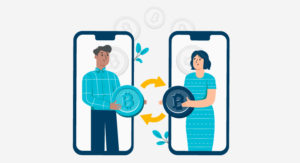What is Facial Recognition?

With most of the services going online and you as a user having to prove your identity at every step, identity verification solutions have become a crucial part of the process. The sensitive nature of today’s transactions requires sophisticated identity verification methods.
In this guide, we’ll break down facial recognition, what is it, and how it works. Let’s dive in.
What is Facial Recognition?
Facial recognition technology is a type of biometric security technology that uses facial features to identify and authenticate an individual.
The technology runs on a vision algorithm to analyze and identify unique facial characters. It identifies special facial features, such as arrangements of facial landmarks and features. Facial recognition technology can confirm identity via different mediums, including photos, videos, or real-time scenarios.
How Facial Recognition Works
Facial recognition works by capturing facial features. Facial mapping is done by measuring the total number of nodal points on the face to create unique facial data for each individual.
A biometric verification software uses computer vision algorithms and analyze unique facial characters. Once a face has been captured, it is added to a database that can be used for identifying the facial characters. Whenever a user requests access to a service (as simple as unlocking their devices), the software refers to the data to authorize the access.
The system takes a snapshot of the user and compares facial data against the database to ensure that the details match.
Advantages of Using Facial Recognition Systems
Facial recognition systems are versatile so they can be applied to a number of use cases. Here are all the advantages of facial recognition systems:
- Enhanced Safety & Security – Facial recognition systems can provide enhanced safety and security preventing the risk of financial fraud.
- Fraud Prevention – FRT helps you fight fraud by verifying identities, particularly in financial transactions and access control scenarios.
- Convenience & Efficiency – Facial recognition technology makes identity verification easy and seamless. It’s proven to be more effective compared to biometric technologies like fingerprint, and retinal verification.
- Safety & Security in Law Enforcement – Law enforcement agencies use FRT to maintain public safety. Facial recognition technology can help uncover criminal activities, and locate individuals of interest.
- Crime Prevention – Not just financial fraud, FRT helps in preventing crime by identifying potential threats and assisting in responding quickly to security incidents.
Disadvantages of Facial Recognition Technology
There are some drawbacks of facial recognition technology that you should know about:
- Threats to Privacy – As FRT captures and stores individual’s facial data, it does raise some concerns about potential misuse of potential information.
- Violation of Personal Rights – There are some risks of the technology may infringe on personal freedom and rights.
- Data Vulnerabilities – FRT systems can be compromised and facial data can be stolen which leads to identity theft, synthetic identity fraud, and other types of financial fraud.
- Biases & Inaccuracies – The technology may have some biases, including racial and gender biases. These biases can lead to inaccurate results, which leads to false positives or negatives.
- Ethical Issues – FRT can contribute to racial discrimination in law enforcement use cases and raise ethical dilemmas related to testing inaccuracies.
- Limited Accuracy – The technology isn’t perfect. It’s only 100% accurate, leading to limited reliability in identifying individuals which can produce errors in certain situations.
Use Cases of Facial Recognition Technology
Many businesses from different industries have requirements that can be met with facial recognition technology.
- Fraud Detection: FRT is a method for securing access to any app/service. It allows or denies entry based on verified identity. Facial recognition technology has become a crucial component, it prevents unauthorized access to sensitive information/systems.
- Cyber Security: One of the biggest use cases of FRT is cyber security. The technology can verify user identities to reduce the risk of fraudulent activities. It’s an ideal solution to prevent bad actors from gaining access to sensitive information, databases, and systems.
- Banking and Finance: Banks and financial institutions use FRT technology alongside retinal scans and fingerprints to verify the identities of the users. Biometric verification helps in cutting down the risk of fraud and streamlines the KYC process.
- Healthcare: Healthcare facilities also use facial recognition to maintain robust access controls. It allows only authorized personnel to enter restricted areas.
FAQs
What are the advantages of using facial recognition technology?
Facial recognition technology is an easy way to complete identification and authentication. FRT can be applied in several ways, making it a beneficial solution for effectively managing critical aspects of a business, such as access control.
Can a photograph fail facial recognition?
FRT systems are run on powerful algorithms. So if they fail to recognize the difference between a photo and a video, it’s because of the poor algorithm.
What is the difference between face detection and face recognition?
There’s a core difference between face detection and face recognition. Face detection software identifies the presence and location of faces within an image or a video frame. Facial recognition extends beyond recognition, identifying and authenticating people for various purposes.












